The Escalante 4 is now available!
If you want the latest and greatest, go and check out our review on the Escalante 4. Some of the features of the old Escalante in an updated pacakge.
The Altra Escalante has long been the love of many road runners, gym-goers, and casual sneakerheads. And now Altra has just released an update to bring the version to 3.0! So does this new jump in versions mean it’s an entirely different shoe? Find out in this blog post.
Affiliate Disclosure: By clicking through the links on this page and purchasing the products, you’ll be helping me out. This is done because I receive a kickback from the sellers at no extra cost to you! Thank you so much for supporting us!
Escalante 3
If you’re new to the Escalante, it’s an Altra shoe that balances between two different markets. It’s a great option for a soft, easy run but can also be used as a casual zero-drop alternative to traditional brands.
Coming in with 24mm of cushion, it’s by no means minimal, but it looks relatively normal underfoot compared to the Altra Paradigm or Torin.
But how does the Escalante compare with its predecessors? You’ll notice some familiar features and fundamental changes if you’ve been a long-time Escalante wearer.
Keep on reading to find out what they are.
Altra is known for their zero-drop platform and wide toe boxes –and that’s still present in the Escalante 3.0, but not in its full glory.
The Escalante 2.0 and 2.5 utilized a very flexible upper in the past. So even though it wasn’t the widest Altra shoe, the upper was very forgiving and almost slipper-like.
In version 3.0, we’re now seeing an upper with more structure, a stiffer mesh material, and a narrower fit in general.
For some, that’ll come as a huge disappointment. But there are benefits to be had.
In older models, any type of lateral movement sent you rolling over the side of the shoe. Not a feeling you want when turning a corner of a goal race or in the gym.
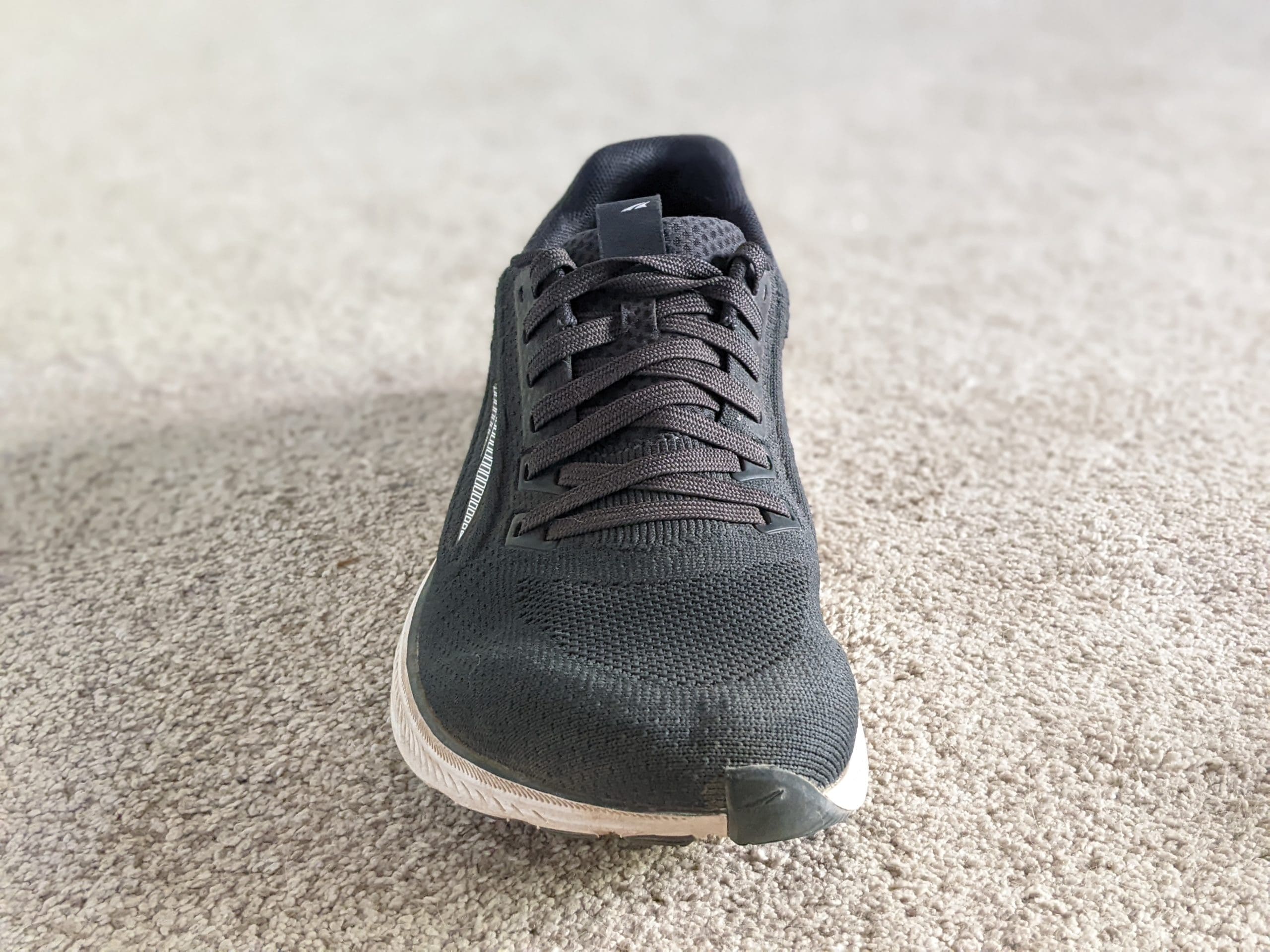
In the Escalante 3.0, your foot is locked more securely in place thanks to the redesigned upper.
On the downside, the shoe is a lot less forgiving.
If you were someone pushing out of the side of the old Escalante’s, you would have a tricky time with the 3.0.
This less forgiving upper seems to be a general move for the Altra lineup, as they seem to be trying to appeal to a broader audience. The jump between Altra and traditional shoes like Nike, Addidas, and Hoka is less dramatic now, and you’ll likely see more Altras on people’s feet in the future.
For me, the Escalante 3.0 is still OK, not perfect. I’d like to see a more volume in the toe box, but I can solve that by replacing their sole with a thinner one.

Tongue
A huge notable difference between the new Escalante and the older versions is the change in the tongue.
On the older models, Altra opted for the thin, single-material tongue that offers no padding but a smooth fit over the bridge of your foot.
For me, this worked great, although others with lower volume feet did have some tongue slippage from side to side.
Now in the 3.0, the tongue has reverted to a traditional design.
Although I liked the old tongue, this conventional version still performs well for me. And the tried and tested design is likely a better bet for a wider audience.
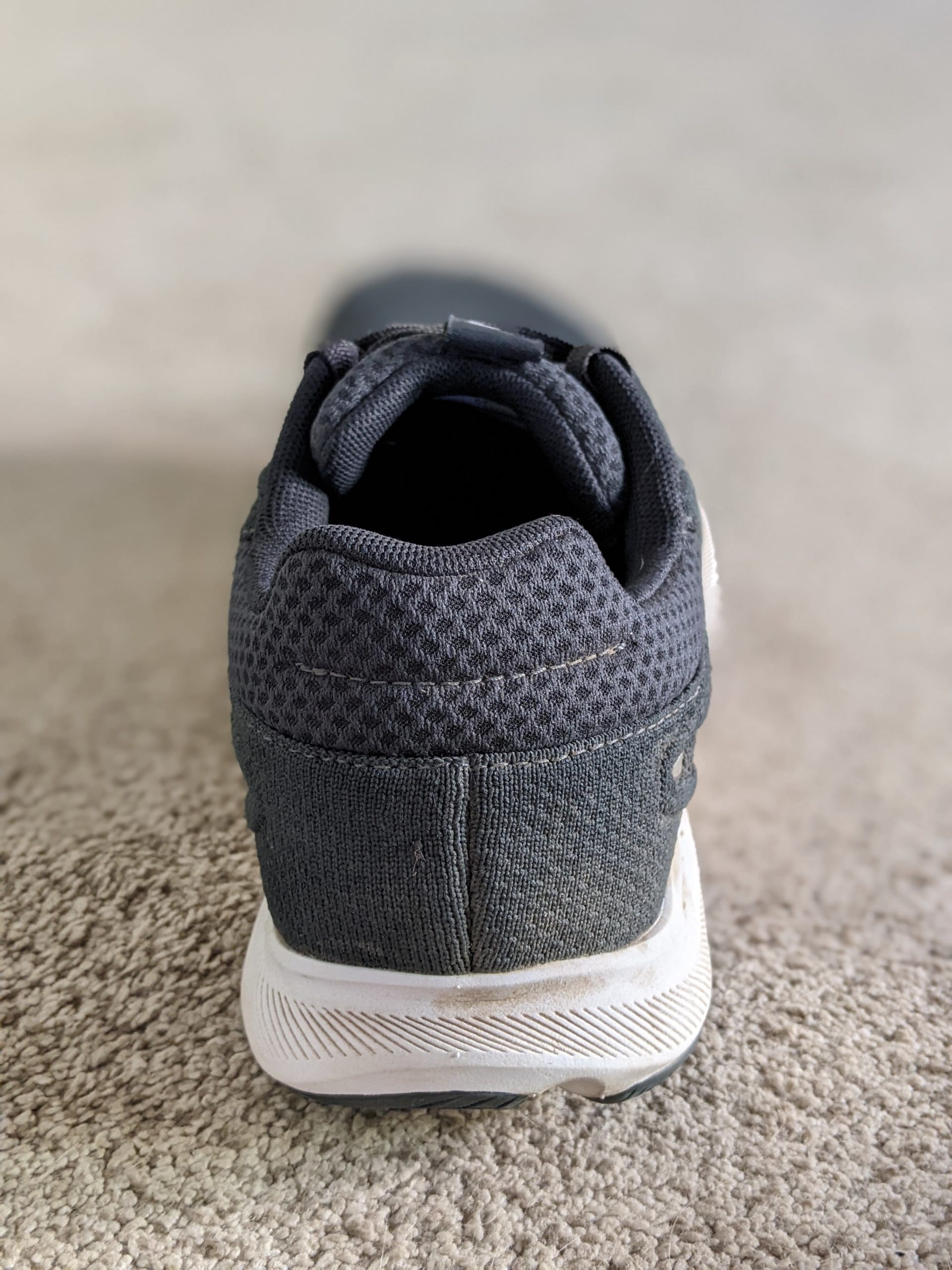
Heel Cup
The Altra heel has remained similar to the older versions.
There’s still a heavy amount of cushion and no plastic heel counter to provide added support.
Some people have had issues with the heel on Altras in the past. They’re pretty wide and open like a skate shoe. So if you’re someone with a narrow heel, try them out first to make you don’t get any heel lift.
Even though there is a lack of heel counter, I still find the lockdown is great –and I credit that to a lack of heel counter!
Hear me out. If you have a rigid structure in your shoe, you have to hope that it matches the contours of your foot. If not, there’s no give to allow the shoe to morph to the correct shape.
Conversely, tightening a shoe with minimal structure will wrap the upper material around your heel perfectly. And that’s why some of my best-fitting shoes are barefoot style.
Which Altra Shoe is for you?
Take a quick 4-question quiz to identify the perfect Altra running shoe for your feet! You'll get both road and trail options based on your answers!
Do they feel the same? That’s the big question. And it’s kinda a yes and no.
For sure, they’re still an Altra. And, arguably, still a forgiving Escalante.
And even though the exterior of the midsole looks very different, underfoot, it still feels pretty similar.
I’ll admit that the 3.0 feels a touch more responsive, but I believe the ride will end up similar to my 2.5 pair over time.
The most significant change in feel is still the upper.
When I’m running, I often move my toes around a lot. I’m not sure if they’re dancing to their own beat or helping me keep balanced. Either way, the ability to move my toes is slightly reduced due to the lack of volume in the 3.0.
Like I’ve said before, I’ll likely be replacing the insole in the 3.0, just to give the shoe a little more volume and let those toes move.
On the flip side, if a “performance” style fit is up your street, this change may appeal to you.
Innerflex
In the past, Altra used to boast about their innerflex technology. These little cutouts ran horizontally across the ball of the foot and toes.
Innerflex helped the shoe flex a little more near the joints of the toes and allowed your feet to work more naturally.

Altra Escalante 3.0 Outsole

Altra Escalante 2.5 Outsole
In the 3.0, they’re less pronounced.
This leads to a stiffer forefoot, and a rocker feel to the shoe.
By no means is this akin to a Hoka, but a subtle difference between the Escalante versions.
Over time the foam will likely soften, helping bring back that natural motion to the shoe.
If you’re dead set on keeping the flexible forefoot like an Escalante 2, or 2.5, I’d suggest looking at the Topo Athletic ST-4. There are drawbacks to the shoe, but it’s still flexible and soft.
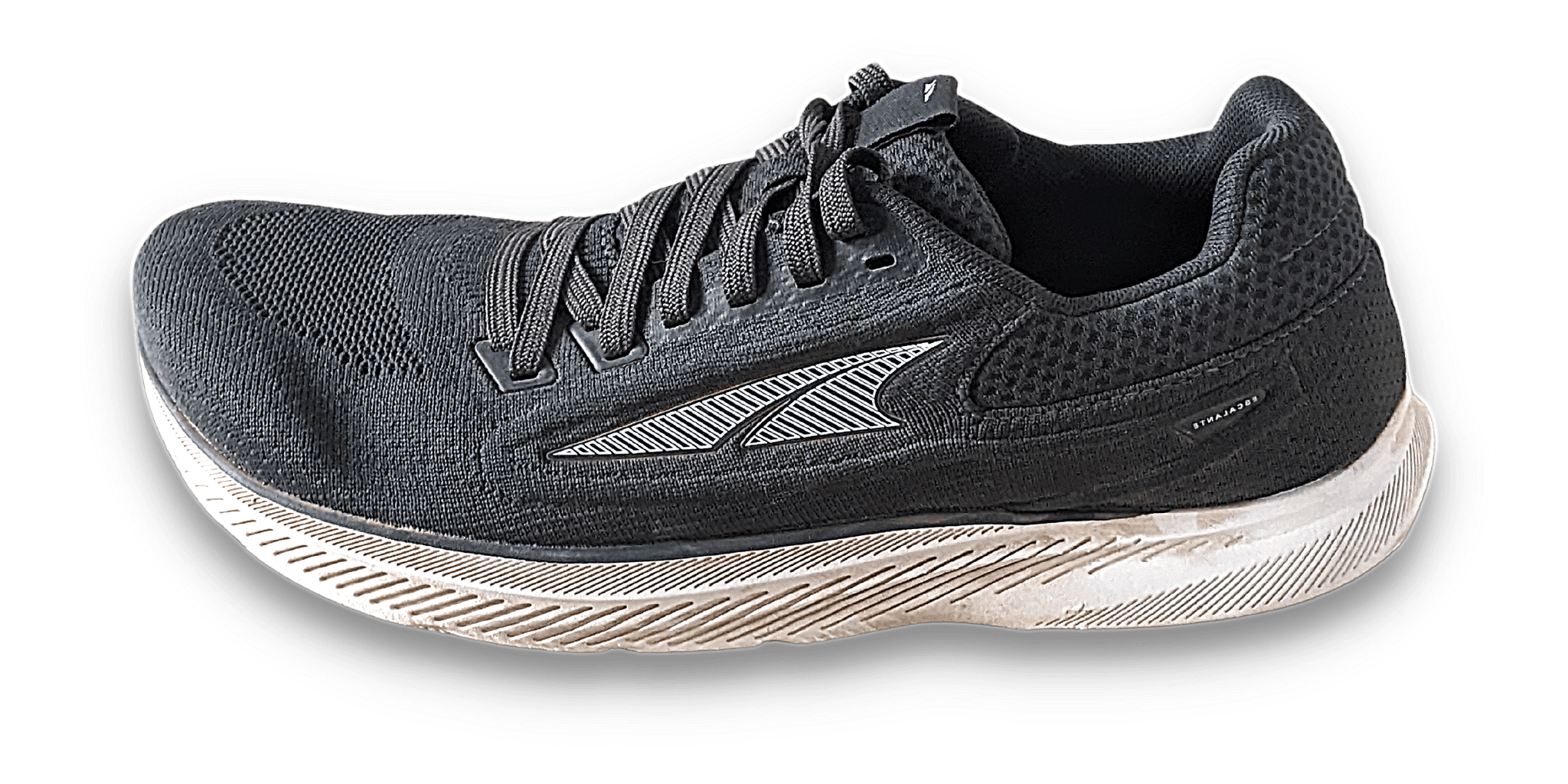
Escalante 3
Durability
Looking over the 3.0, it’s tough to say what will break down first.
Upper – No
Midsole Foam – No
Outsole Rubber – Possibly
Although the Escalante has never been known for its durability, I think Altra has done a good job this time.
I’m finding it very hard to believe that the upper will break down prematurely due to the tougher material now being used.
And as for the Ego foam, I’ve not seen problems in that area for 100’s of miles.
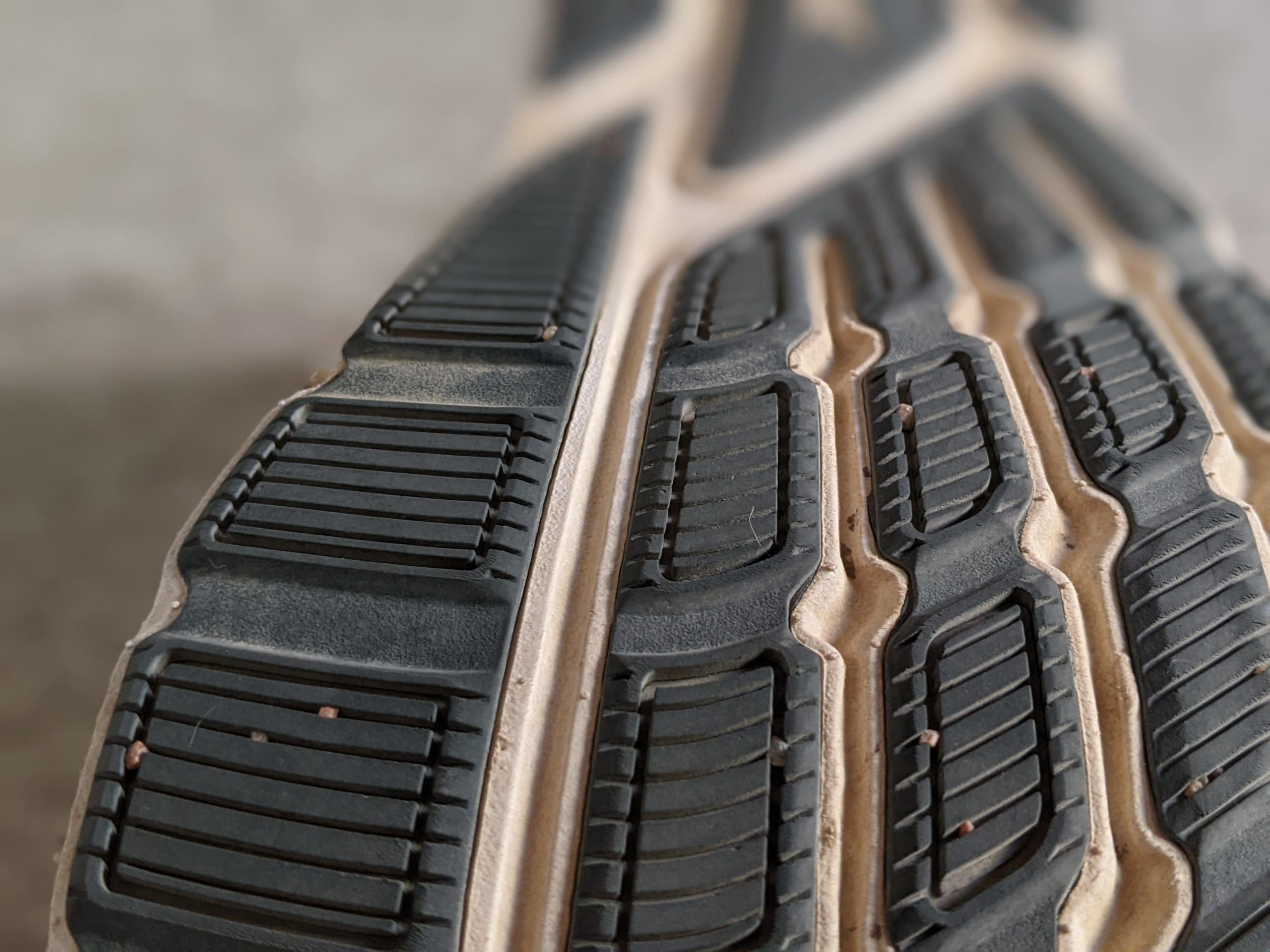
Outsole
This is the first candidate for breakdown.
In my old Escalante’s, the thin rubber covering the foam midsole has always been the area to go first.
And I bet, if you ask any Escalante owner to show you the bottom of their shoes, they would have worn through at least one section of the rubber.
With the 3.0, I “think” the rubber is a little more durable, but only time will tell. After 50km, it’s only showing minor wear, so I’m keeping my fingers crossed!
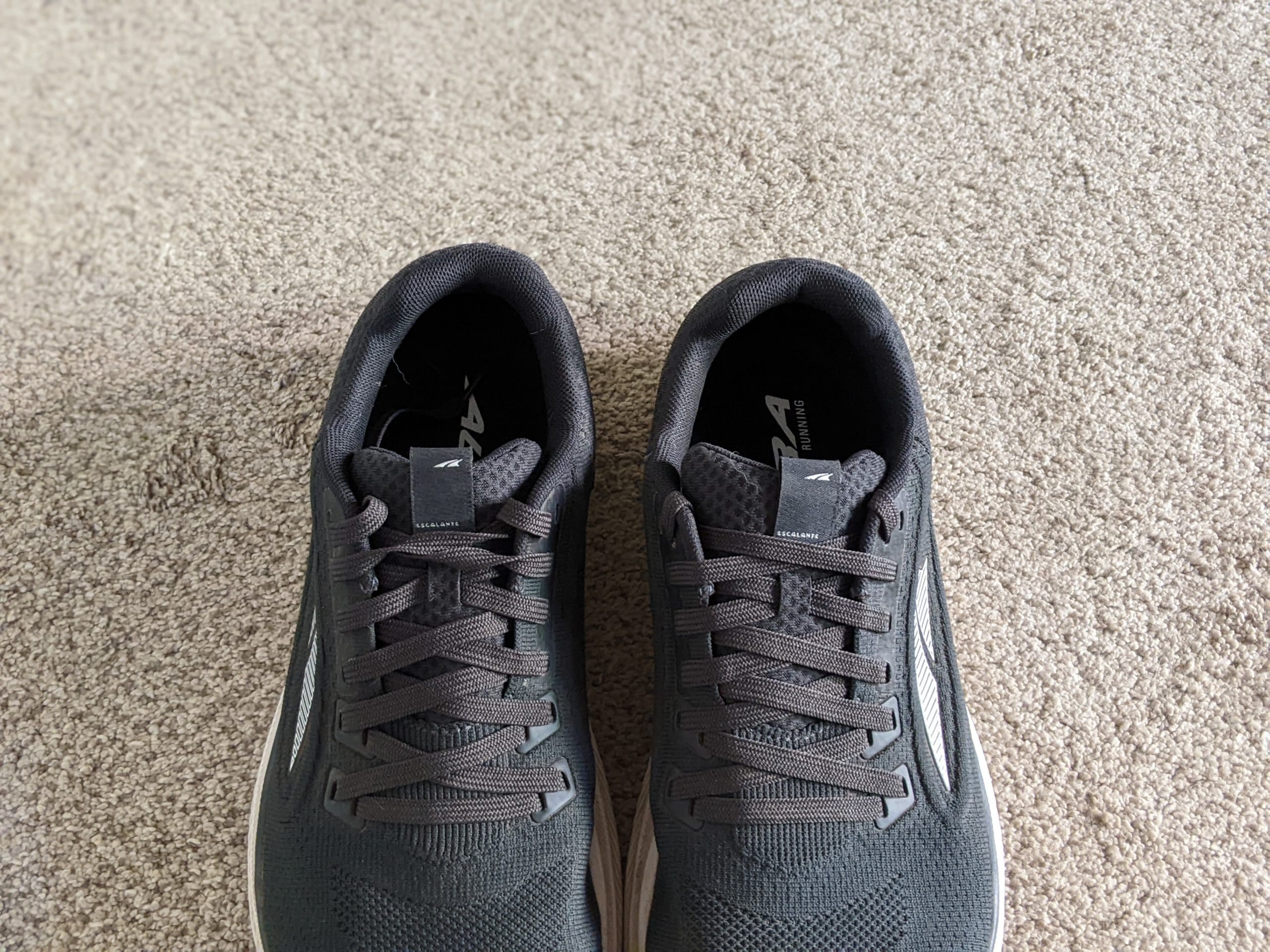
Inside Liner
What about inside the shoe?
It’s an area my wife always has trouble with premature breakdown.
And really, I don’t expect much change here.
The material is little changed; if anything, it feels slightly less plush.
So the key here for longevity is a good fit. If your feet aren’t moving in the shoe, you’re less likely to rip through the inside liner.
If you’ve read my reviews before, you might know that I like to perform a quick gait analysis of myself running in the shoes. I feel it gives another dimension to help you and me make better shoe-buying decisions.
To perform the analysis, I use University grade measurement pods to estimate ground reaction force, peak impact force, pronation angle/speed, and much more.
I performed a 1-mile run on a treadmill at an 8:34 per mile pace with the 2.5 and 3.0 Escalante’s. I then tested the Vivobarefoot Primus Lite’s barefoot shoe as a “control” comparison.
Results
There’s very little difference between the two versions of the Escalante. You’d generally expect it when one is just an update of the other shoe.
But let’s explore the minor differences anyway.
Impact
| Shoe | Altra Escalante 2.5 | Altra Escalante 3.0 | Vivobarefoot Primus Lite |
| Impact Force (G) | 5.4 | 4.4 | 5.6 |
Interestingly, the Escalante 2.5 behaved very similarly to the barefoot shoe. These figures tell us the force when I hit the ground was lower in the Escalante 3.0.
But wait…..
| Shoe | Altra Escalante 2.5 | Altra Escalante 3.0 | Vivobarefoot Primus Lite |
| Peak Ground Reaction Force (multiple of body weight) | 2.9 | 2.9 | 2.7 |
The peak ground reaction force (GRF) was identical with the two Escalante’s. This means the forces exerted into the body at peak impact were the same, likely due to my biomechanics adjusting to the minor differences, which evened out the impact.
So which is better?
With such insignificant differences, the 300km on the 2.5 likely affected the results vs. the relatively new 3.0. So I’d suggest neither will make a huge difference in impact forces.
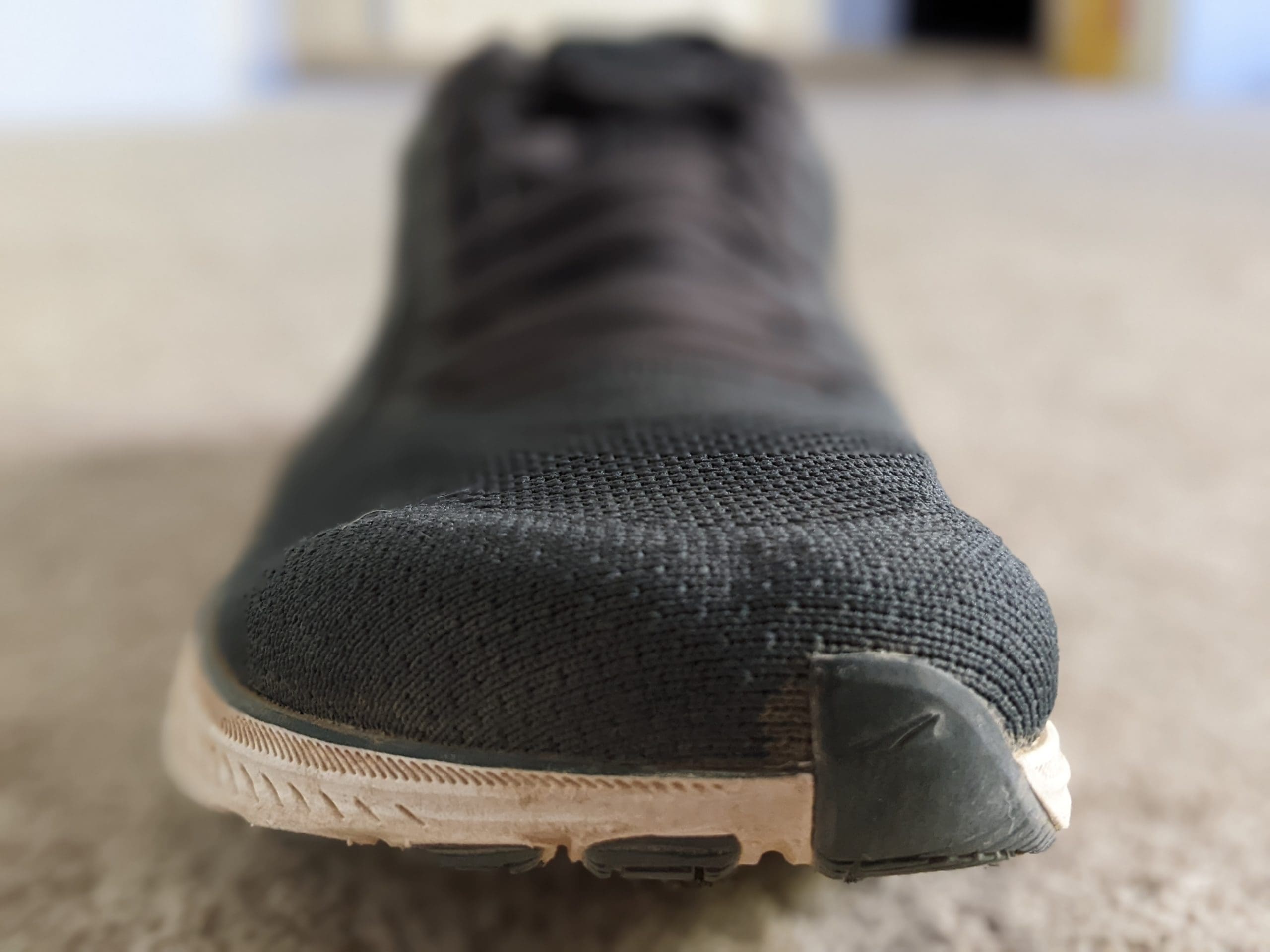
Pronation
Here’s one area that gets a little interesting.
Pronation is the angle measurement of the ankle rolling in or out from the foot’s initial contact position.
Many hear about overpronation and expect that they need a well-structured shoe to “correct” pronation. Still, some amount of pronation is expected and even a benefit. You are utilizing your ankle to absorb some of the impact from the ground.
Another interesting pronation measurement is the speed at which pronation occurs. That’s how fast you move from the initial foot impact position to the final pronated position. Different shoe designs can have dramatic effects on both pronation angle and speed.
| Shoe | Altra Escalante 2.5 | Altra Escalante 3.0 | Vivobarefoot Primus Lite |
| Pronation Angle (degrees) | -16.1 | -17.6 | -19.8 |
| Pronation Velocity(degrees/sec) | 573 | 698 | 687 |
The Escalante 3.0 behaves more like a barefoot shoe than the 2.5. And I believe this is due to the firmer foam in the midsole.
With a firmer midsole, you’re naturally being pushed into the final ankle and foot position at a faster speed.
Conversely, you’ll sink into the squishiness with a softer foam, and normal pronation will not occur as much.
So which is better?
The standard advice is to go with a softer foam if you tend to supinate (rolling outwards from the midpoint) because the amount of pronation will reduce and lessen the chance of rolling an ankle.
If you tend to overpronate (around 70% of people), you’ll want a more stable and, in this case, firmer midsole.
Again these differences could be due to the age of my Escalante 2.5. But with the omission of the innerflex groves and the stiffer upper, I genuinely think there’s been a shift towards a firmer ride.
Therefore, the Escalante 3.0 will likely work for more runners than the 2.5 did.
It’s a change! But not a huge change. The old charm of the Escalante is still on show for all to see.
The small changes in the upper may disappoint some, but these changes are minor, and if the volume is an issue, a simple change of inner soles can simply rectify those issues.
If you’re looking for a 5km all the way up to the half-marathon distance speed work shoe, the Escalante is a perfect choice.
And if you want to transition to barefoot (here’s why you should) but want a “transition shoe” to help carry you along the journey, the Escalante could be a good shout.

Escalante 3
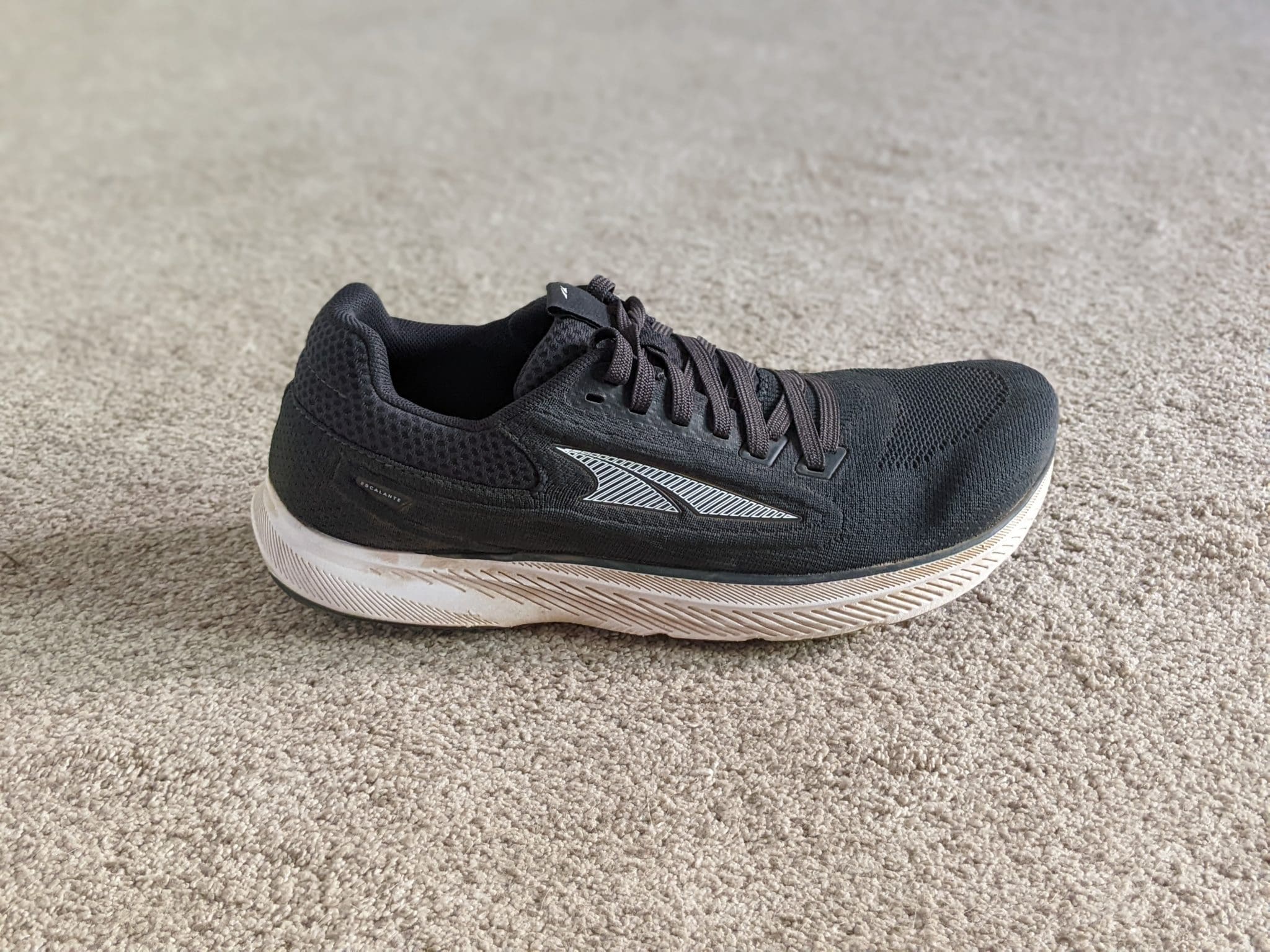


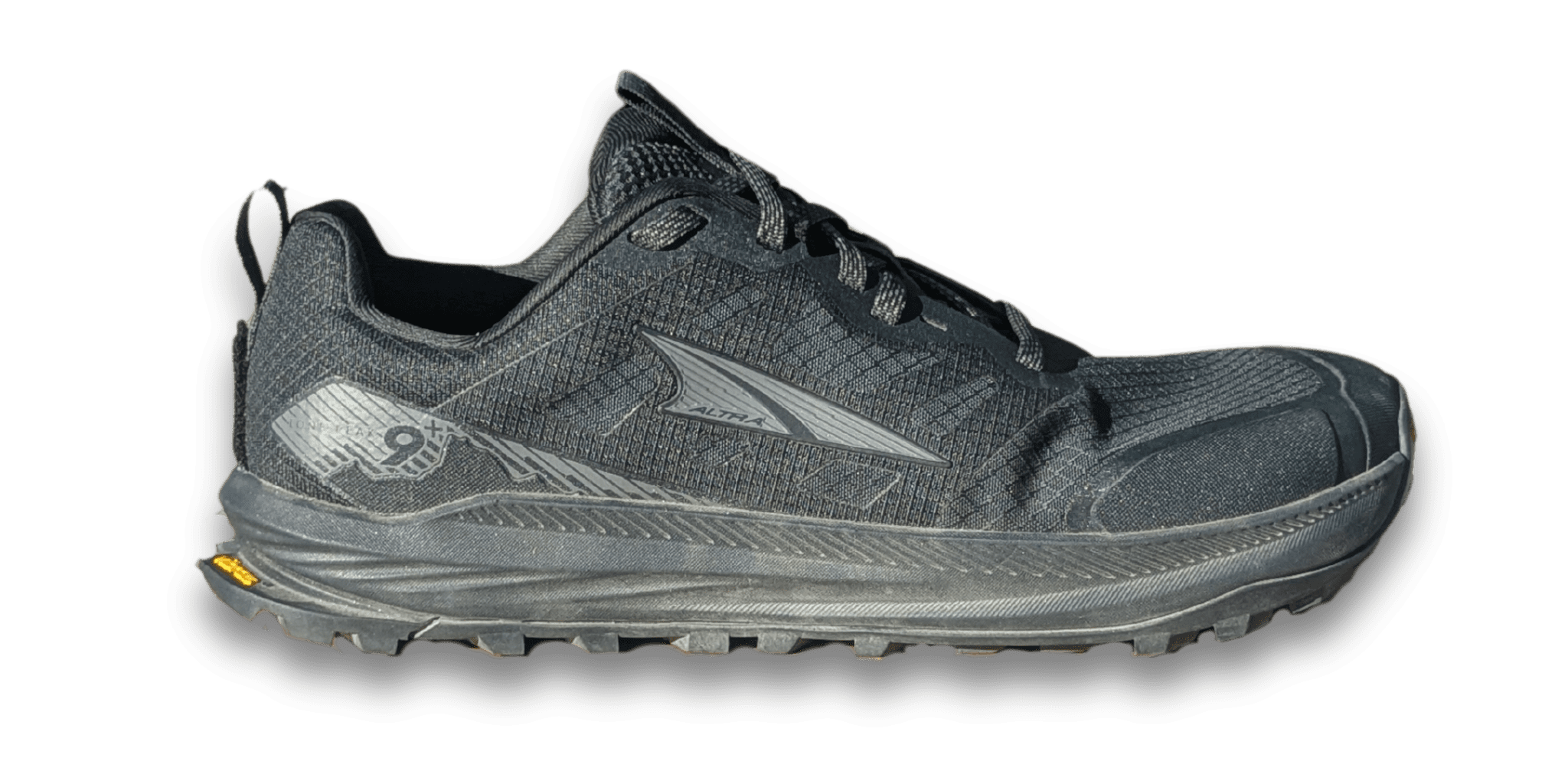



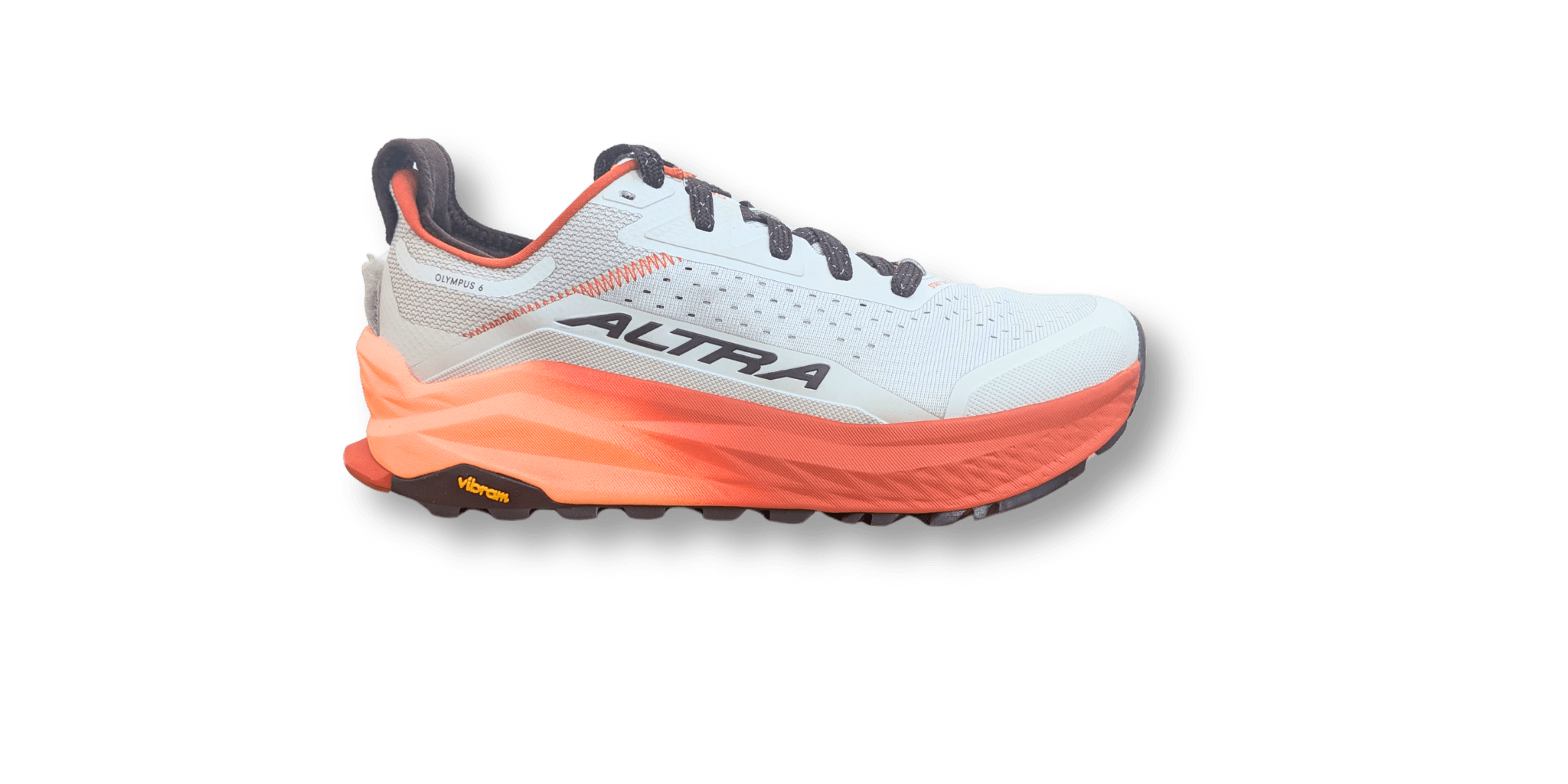
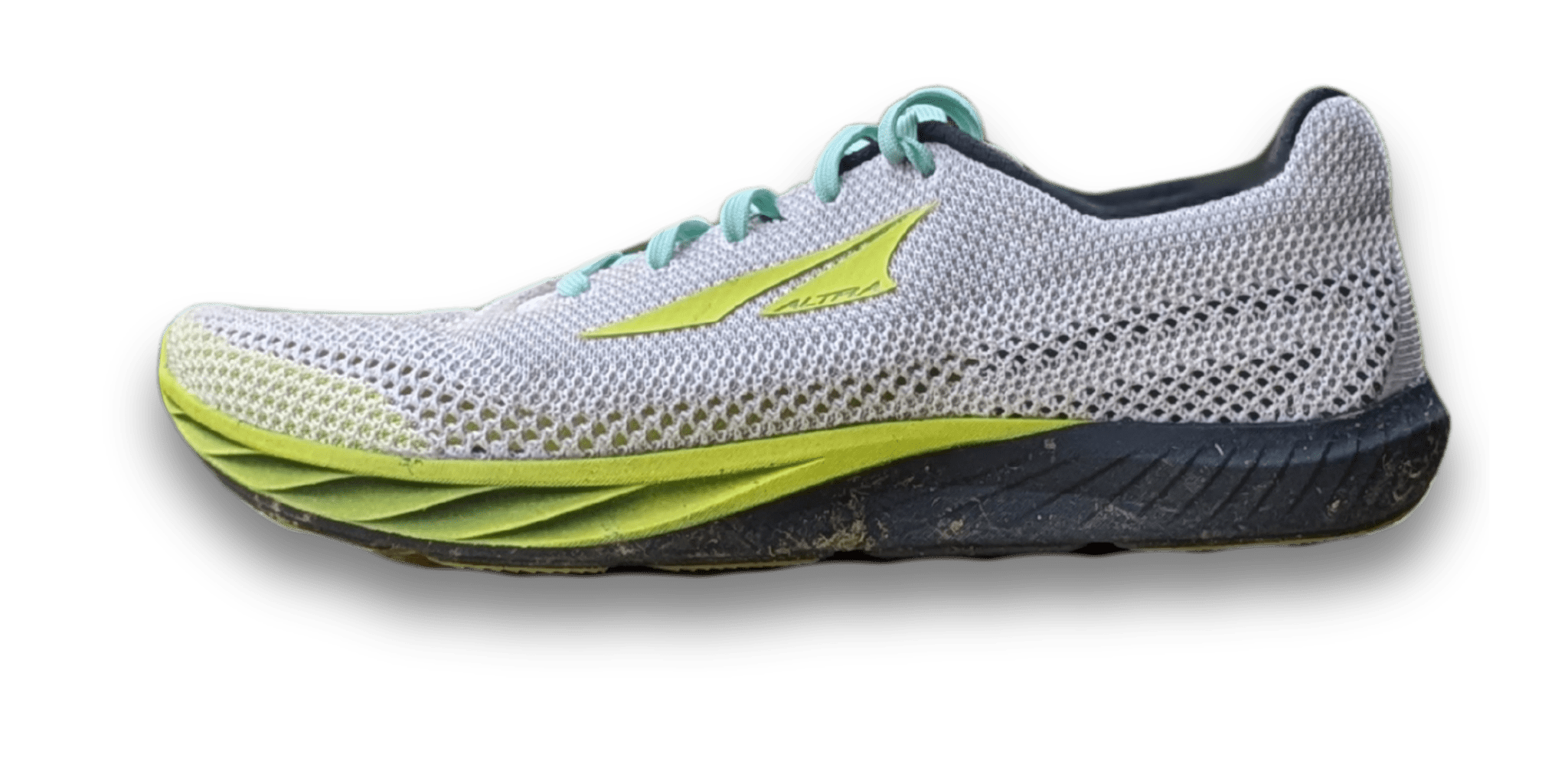
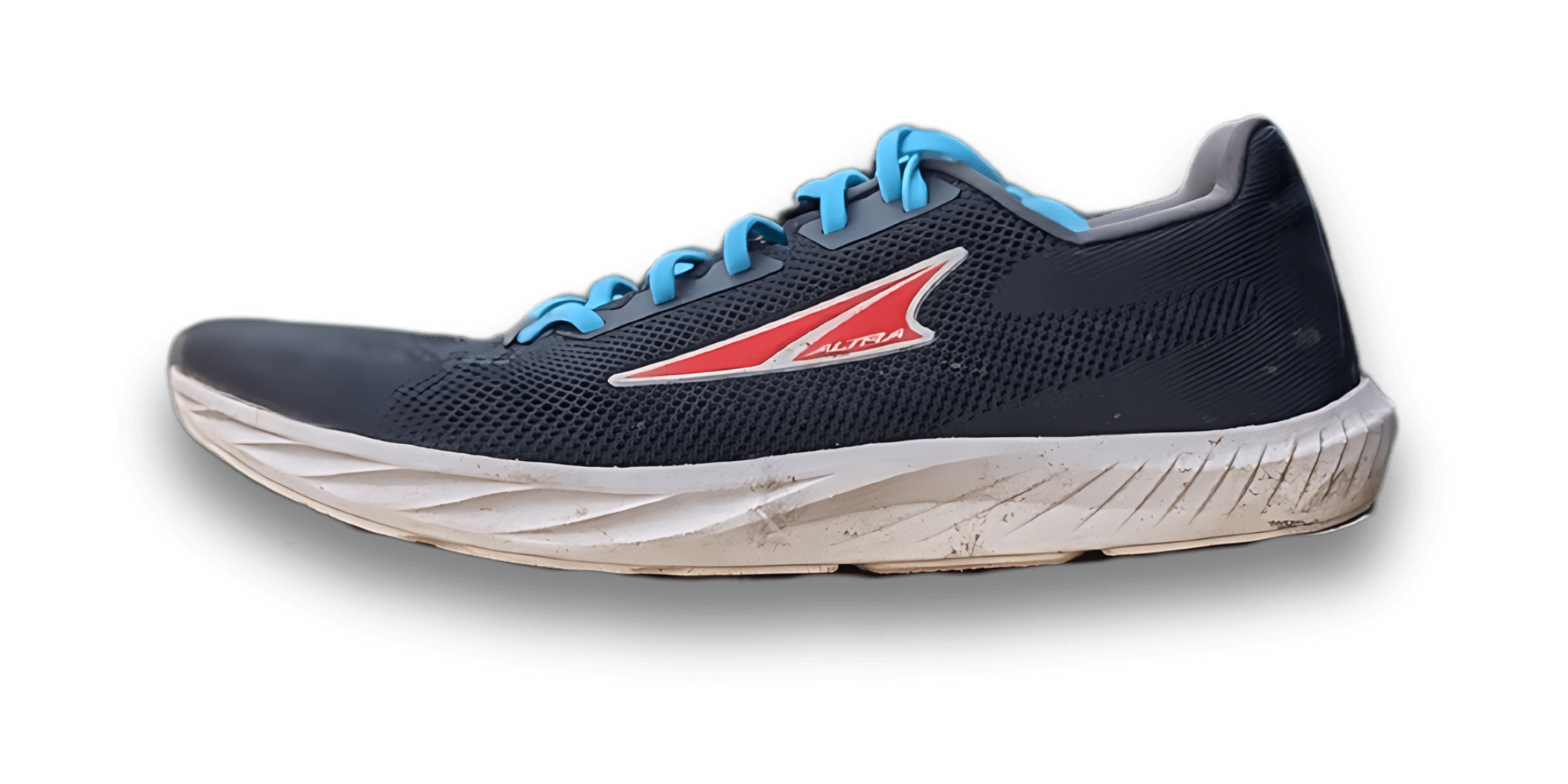
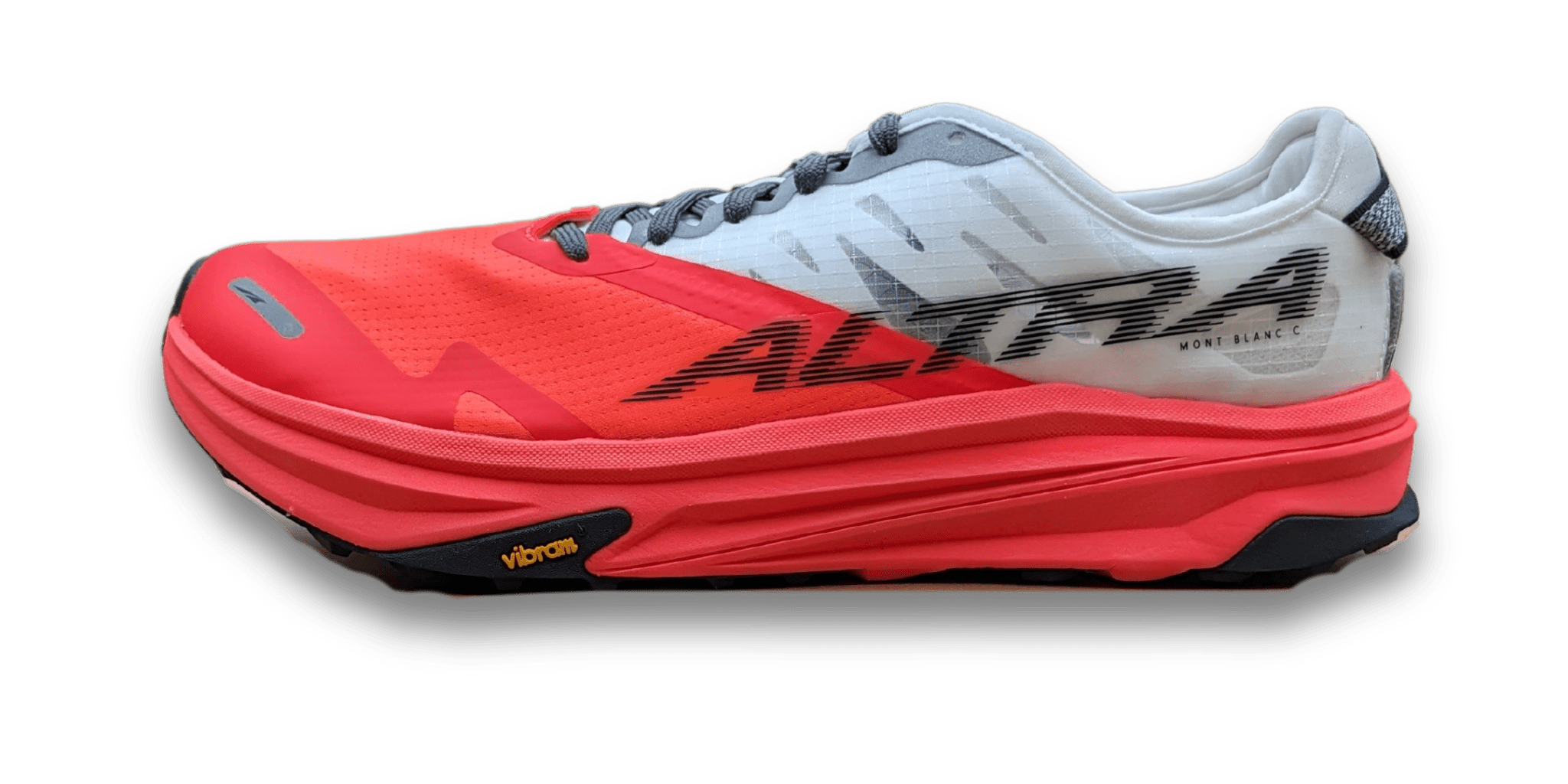

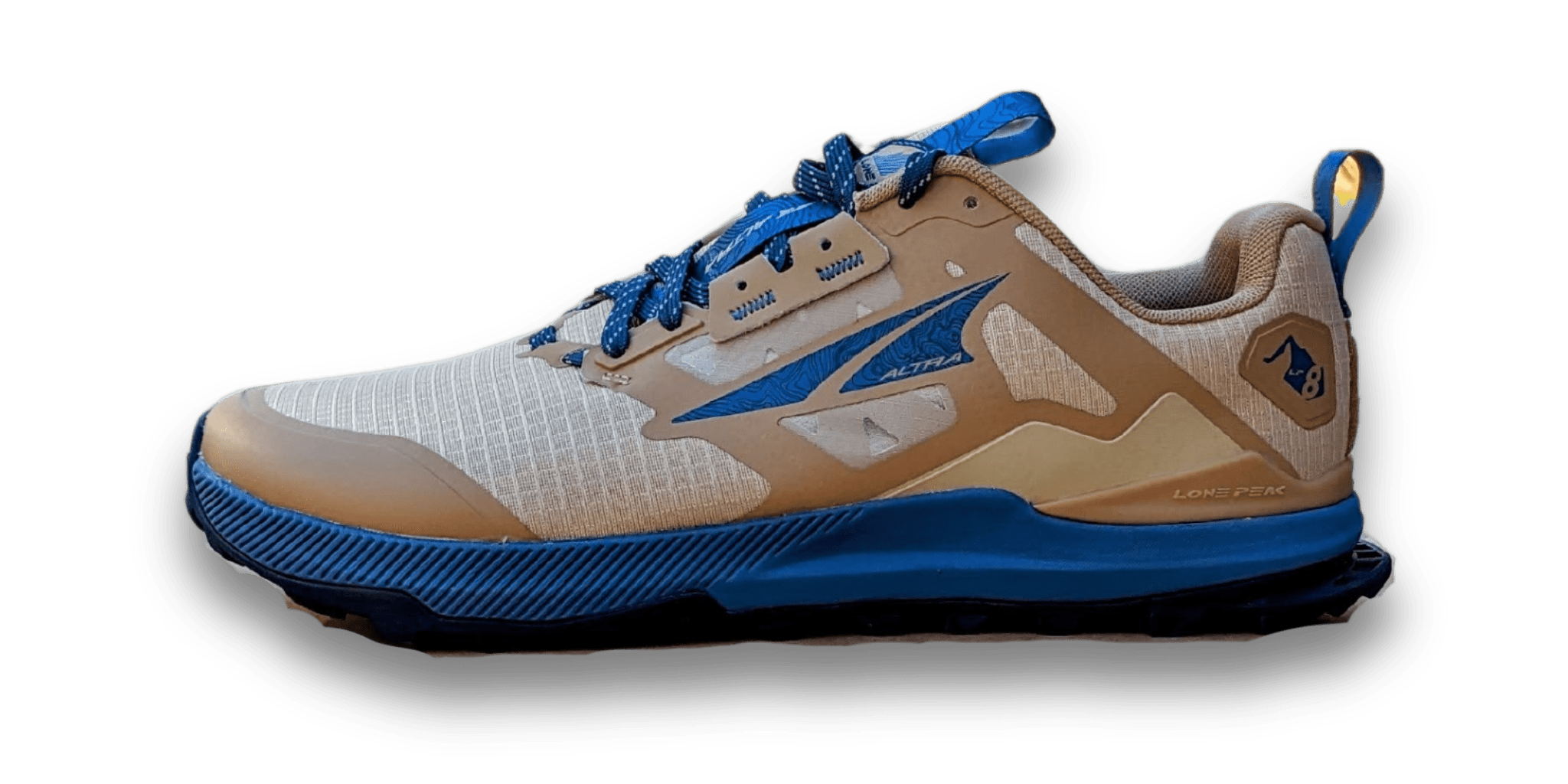
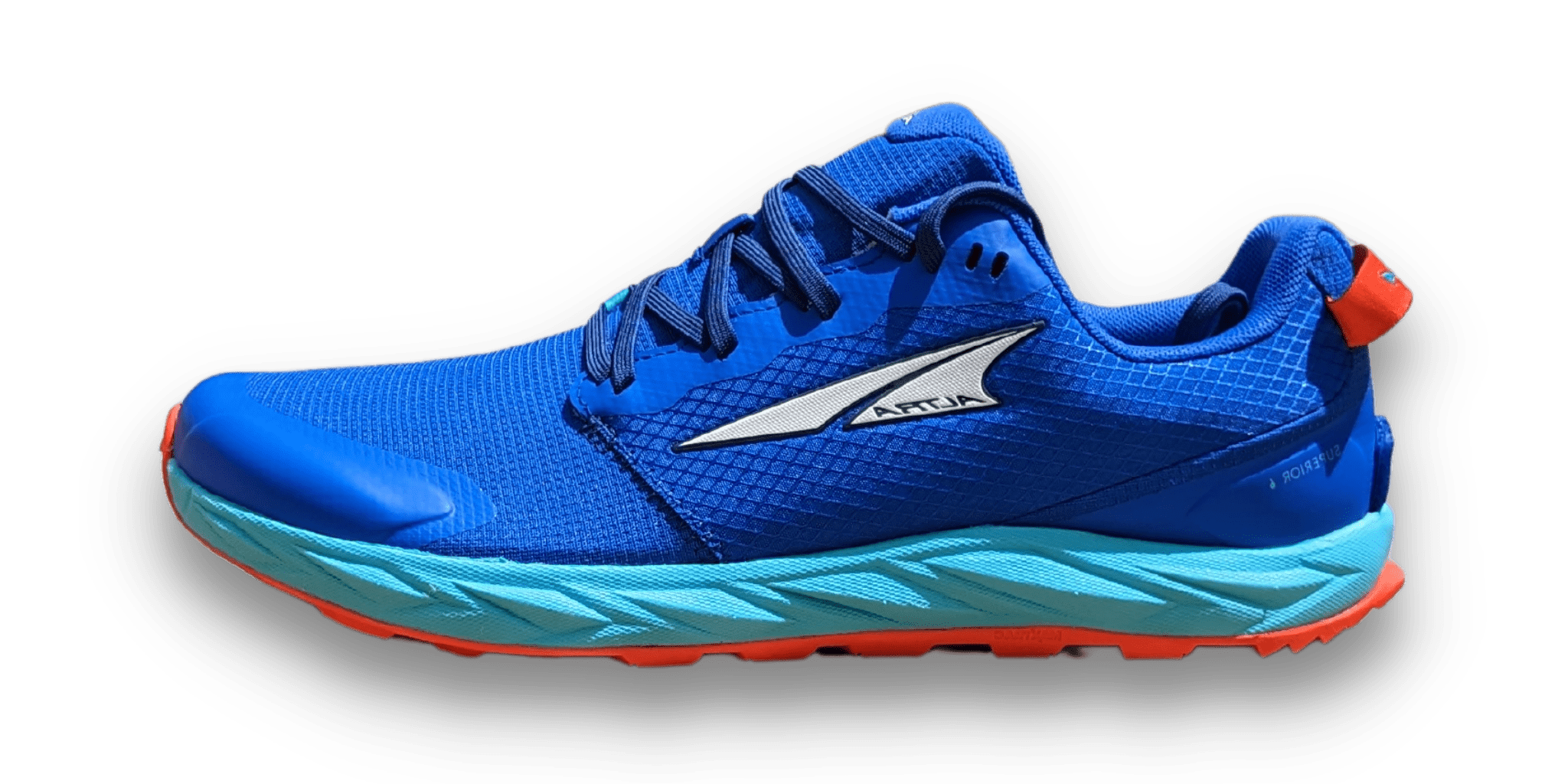
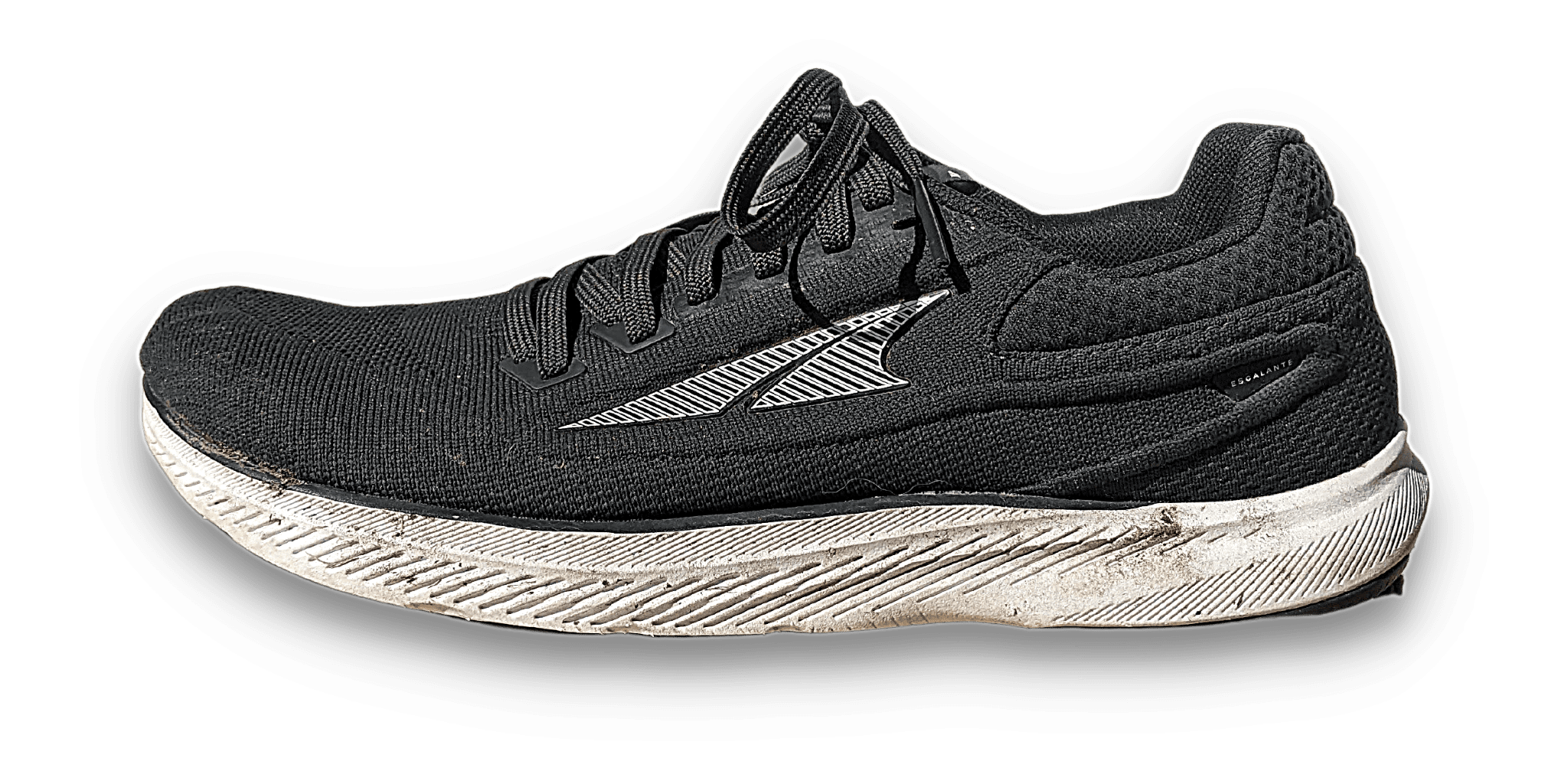

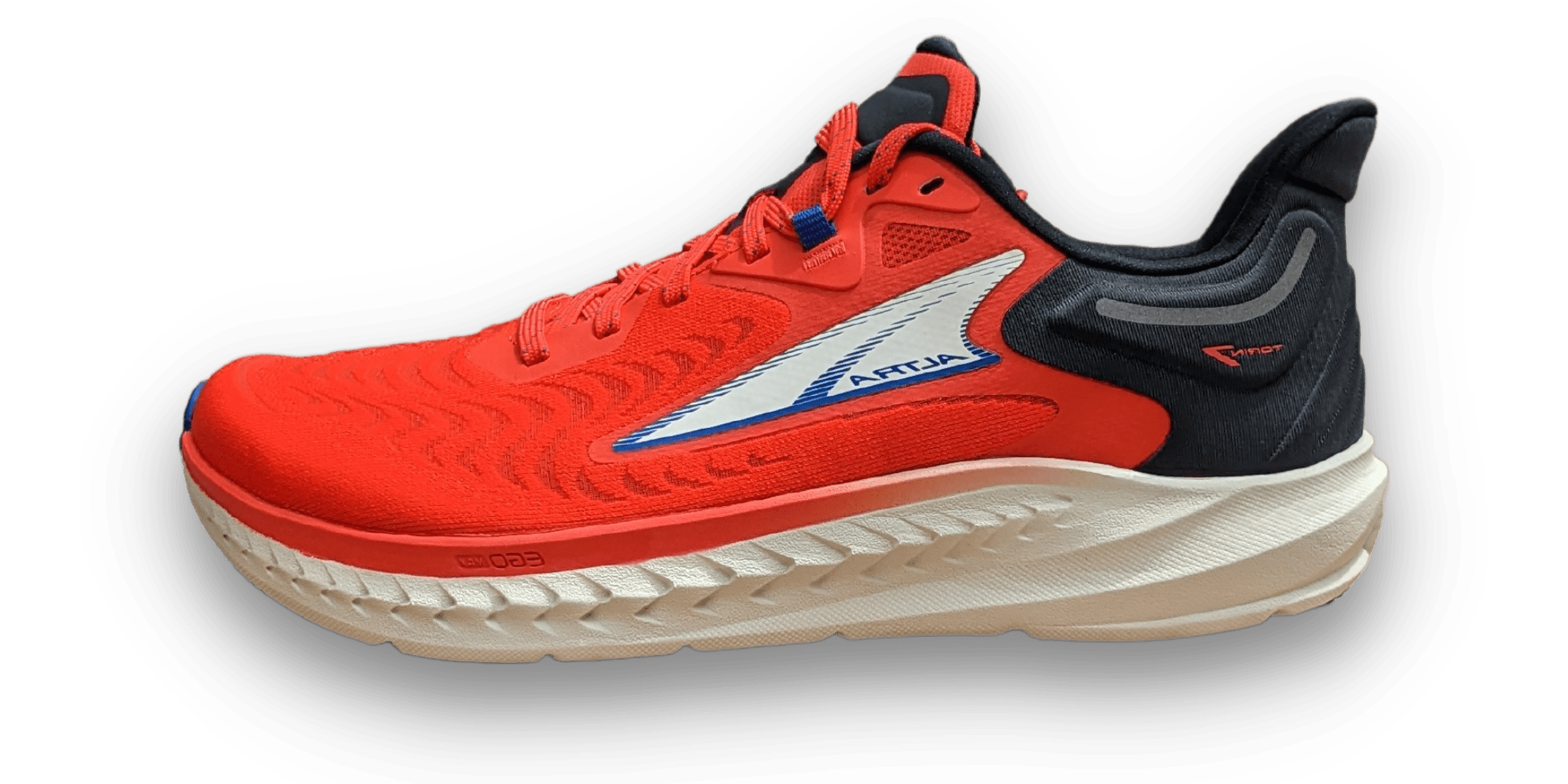



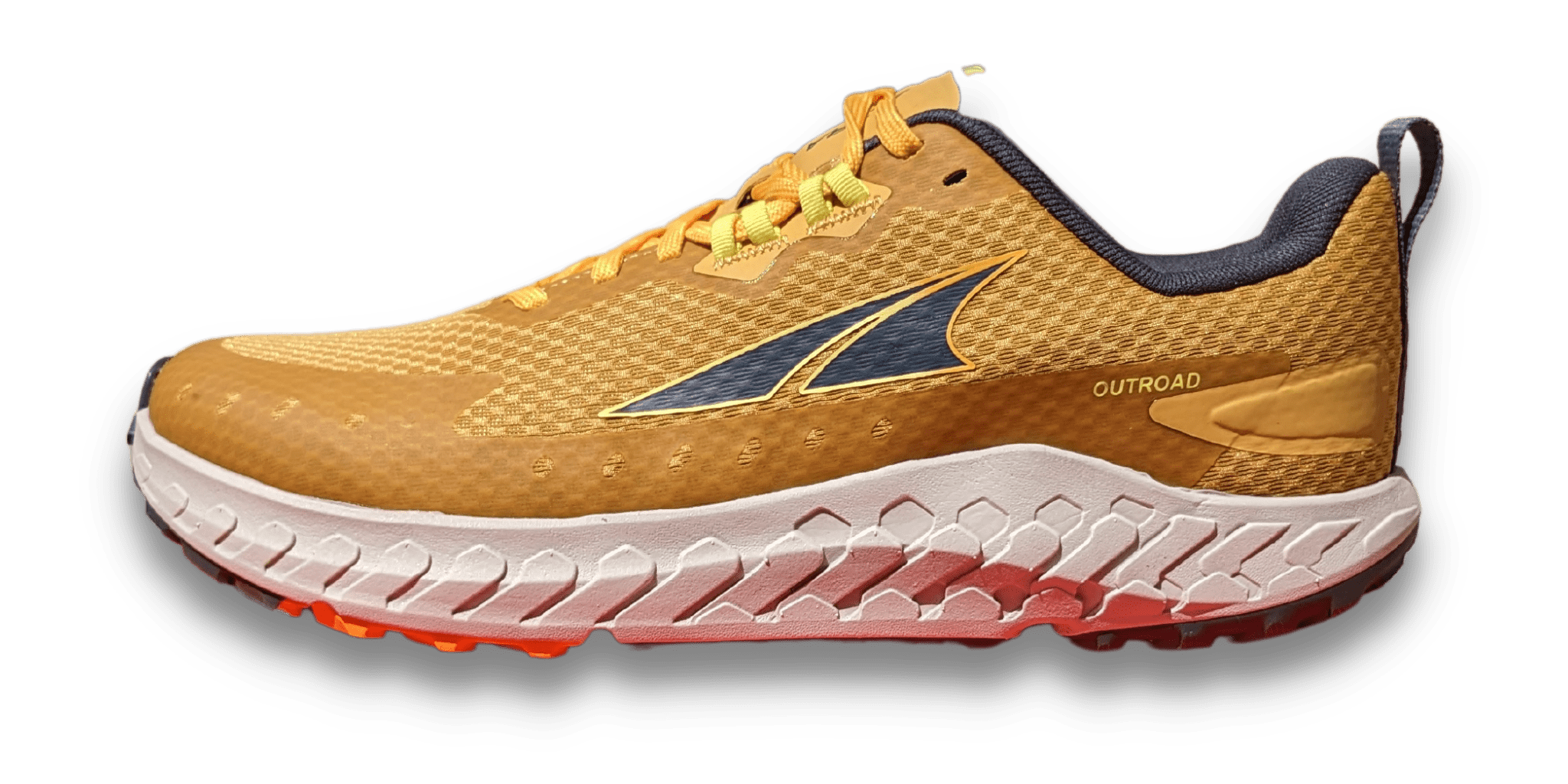

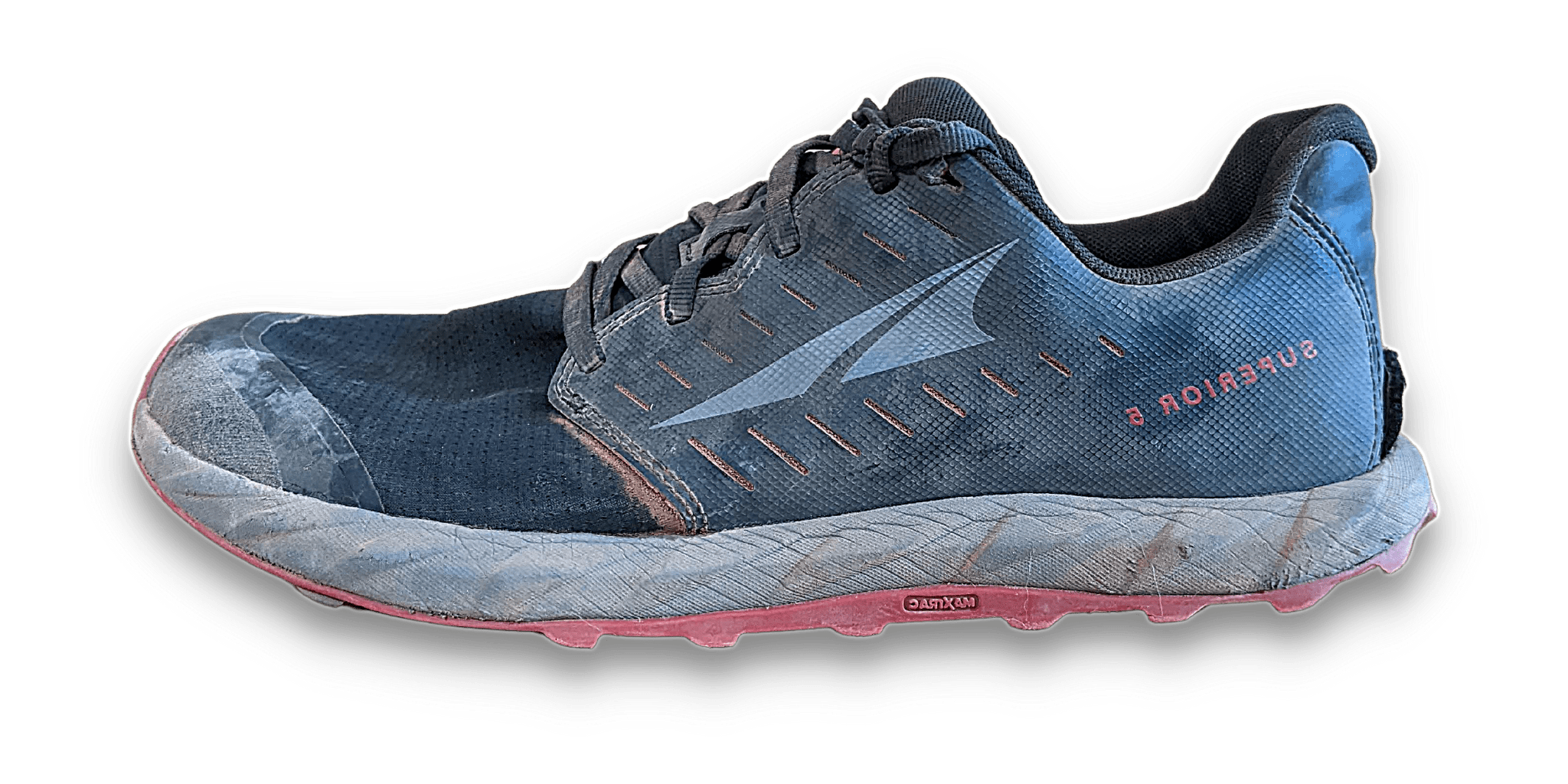

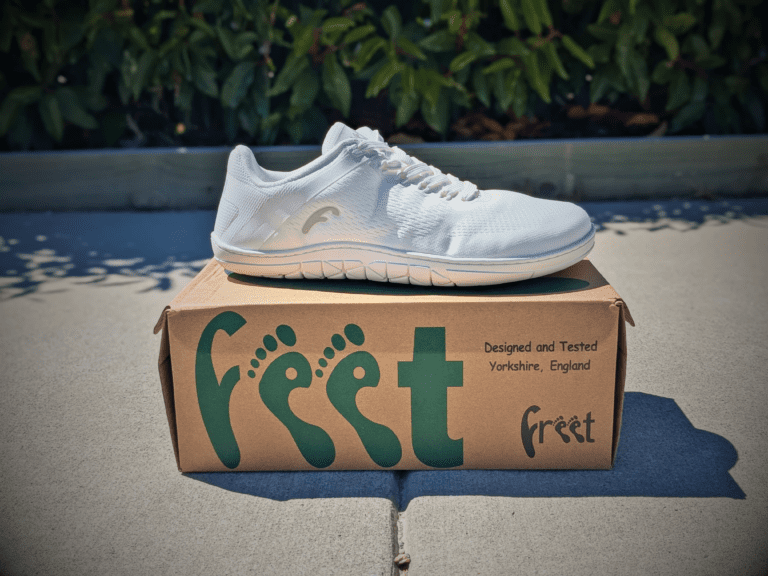
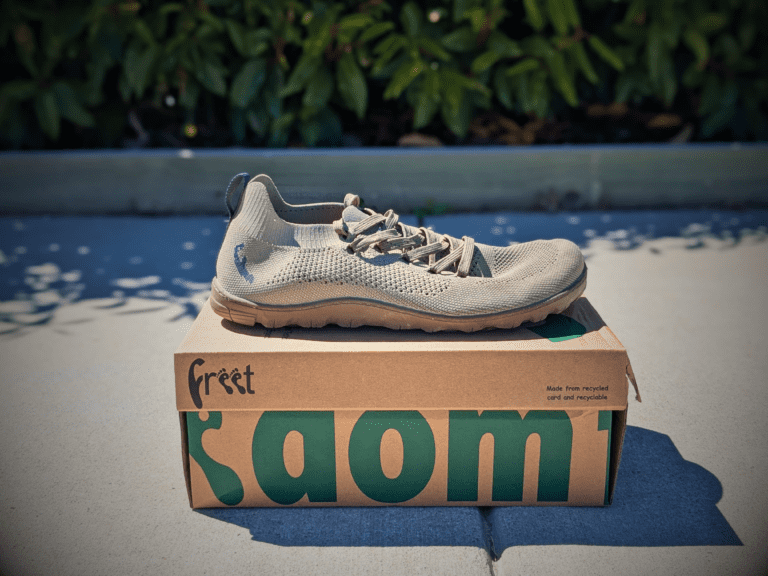
Fab review. Thanks so much for all of the detail you include. You have answered everything here.
That’s great! I’m glad you liked it! Do you end up with Escalantes then? 🙂
I have a normal arch which shoe will work for me to use for walking.
Thank you
Hi Dee,
If you head over to https://barefootrunreview.com/the-best-minimal-road-shoe-for-you/, and look at the “Fit” section, could you tell me your toe length, width, and depth of your feet using the guidance from the post? That way I’d be better able to suggest a shoe for you! Also, what shoes have fit well in the past for you?
Thank you for your detailed review. I’m an Escalante fan and I’ve owned the 1.5, 2, and 2.5. I love the 1.5 and 2.5.
I hated the 2. My foot was in so much pain. I think I injured my foot and I had to stop running for a month.
I tried the 3.0 and it’s much stiffer than the 2.5. I ran for only 12kms and I was in so much pain I could barely walk after my run. Now I’m at a loss and have to find different running shoes.
Any suggestions?
I hear you. I’ve got a couple of suggestions, but I know none of them are perfect, and I’m still searching for perfect options for the old Escalante lovers.
My first interesting option is a new shoe from Xero Shoes. The Nexus Knit. It actually feels a lot like an old Escalante. I’d just buy a 1/2 size large cause it first a little short. And it’s just a tough heavier. Otherwise, super interesting.
Otherwise here’s a direct excerpt from one of my newsletters I sent out.
What’s the alternative to the Escalante 3?
They’re not like the old ones
I feel you!
The old Escalante’s used to be soft, flexible, and forgiving. But version 3 has changed a little.
So what’s the alternative?
I will give you three options here, but note each is a compromise.
Escalante Racer
With a similar fit and feel to the Escalante 2’s, the Escalante Racer is an excellent choice for those who don’t mind more ground feel.
You will be sacrificing durability, though.
We’ve just seen Altra release some new colors, so I’m hoping they’ll stay in the lineup for the foreseeable.
Checkout the Escalante Racer on AltraRunning.com
Mens Escalante Racer – Womens Esclante Racer
Mix barefoot/minimal shoes with the Escalante 3
The biggest complaint with the Escalante 3 is the reduction in ground feel and flexibility.
I agree that’s a shame, but they’re still decent shoes in other ways.
That’s why I still use the Escalante 3’s, but rotate them with minimal/barefoot shoes so I maintain barefoot strength!
If you want to learn more about barefoot/minimal training. You can read all about it in my blog post, “The Case For Barefoot Running.”
Topo Athletics ST-4
I don’t love this choice, but I’ve gotta give it to you.
The ST-4 still has a lot of flexibility, it’s soft, and it’s zero-drop.
But I have a hang-up about them because there’s arch support! Why would a “barefoot-inspired” shoe have arch support!
But they may still work for you.
So go ahead and read my review over on Barefoot Run Review
Wow! Excellent review!!!
Thanks so much! I’m glad it helped
Thank you for this thorough review of the escalante 3.0. Even though it’s been out for awhile now I haven’t quite been ready to make the buy yet. I’m apprehensive of the new “standard” size that Altra now leans towards as opposed to the original fit that they built their entire brand on and what made me an Altra loyalist.
As far as escalantes go, my ranking is 1.5(all time favorite shoe), original escalante, 2.5, and 2.0 as a distant 4th. I’d be curious if you were someone who wore and or loved the escalante 1.5 and how you would compare the 3.0 to the 1.5.
I might give the 3 a try when it goes on clearance. I definitely appreciate the color variety offered with the 3 that’s been lacking with some other editions and Altra models.
Thanks for the kind words!
Sadly I didn’t try the 1.5’s, but I did sell the original when it was around. I remember it being easy to sell, because it was so forgiving, but that heel cuff was so chunky! Almost like a skate shoe.
If the 1.5 was anything like the original, I’d guess that the 3 isn’t really for you. It’s become stiffer, less forgiving, and the cushion is not as soft as it used to be.
But then that leaves you with an issue of where to look for you next shoe!?
My only idea is Topo ST4. I’ve not run in them myself, but they’re plenty wide enough, lighter cushion, so I’d imagine they’d be flexible enough too.
Or maybe I could tempt you to come over the dark side of Barefoot shoes. 🙂
Great review. Thank you. I have the 2.5’s and they are the best running shoes I’ve ever had. I’ve run in old school motion control and in bare foot shoes and I have never had runners fit me better than the escalante 2.5. I have worn them as I got back into running after breaking my ib and fib. They have been great. I am running over 10kms again now and wondering if I need more cushioning so perhaps the 3.0 is the way to go. Thanks again for comparison. Much appreciated.
Thanks!
It’s a tough decision if you’re completely in love with the Escalante 2.5. The uppers and the cushion differ a little, not to the point where the shoe is unrecognizable, but a big enough difference to where you’d have to get used it.
My first advice would be to search around and find pairs of Escalanate 2.5’s! If you know they work, stick at it!
> I am running over 10kms again now and wondering if I need more cushioning
The answer here is often more to do with your strength and resilience, rather than the shoes. As you might see, much of the other reviews on this site are for “barefoot” shoes, i.e. no cushion. Now I’m not saying you should be running barefoot, but some walking around in barefoot shoes is great training to strengthen your lower legs again. And then you can think about some very short runs. But it’s a slowly slowly game. That way you can go longer in any shoe you want!
Thank you so much for this complete review. I have been wearing ALTRA shoes for a while. Even tho I’m a pronator, the ESCALANTE 2.5 was my shoe until they changed it to the 3.0. I used the 3.0 and did not like the fit, and then switched to the Escalante racer… Now, I need to changed shoes and don’t know which one to purchase. After reading your review, I might give a seopportunity to the Escalante 3.0…
Also, don’t you think brands do “stability shoes” so the wear-off doesn’t happen that fast? Because, in the end, if you are a pronator, you still pronate inside the shoes no matter how stable it is
Thank you
Did the Escalante racer not work for you? I’d say, if it did, then stick with it!
But assuming it didn’t –
If volume or width is an issue in the Escalante, try taking out the insole. It’s a thick insole and takes up a lot of volume, and it’s not required for the shoe to perform.
As for the pronation question, In my opinion, this is mostly a marketing ploy from the shoe industry. Some pronation is natural, it allows our feet to absorb impact, and create forward propulsion. After wearing heavily structured shoe, or using orthotics for a long time, you feet become naturally weaker, causing higher levels of pronation which become problematic.
My opinion on pronation is to strength your feet instead to promote natural movement. And that starts with walking around barefoot, and can progress into foot strengthening exercise, and possibly some barefoot running. But this process should be performed super slowly!
If you want more info on barefoot checkout the following articles I have.
https://barefootrunreview.com/the-case-for-barefoot-running/
https://barefootrunreview.com/step-1-in-barefoot-running/
And always feel free to reach out to me at hello@barefootrunreview.com!
Great review. I’ve work Escalantes since they came out. Prior to that I wore The One. I’ve tried several different models and the Escalante was my favorite. However the 3.0 feels so soft and non-responsive to me. I have searched reviews to find out what’s different and they all say they’re “more” responsive. So I’m wondering if I got a defective pair? They feel so different under foot. I do prefer the new upper. I also have the racer, but can’t wear it during the winter in Upstate NY LOL.
Oh wow! If that’s what you feel, that’s what you feel! 🙂
I assume you find that the racers are too cold for year round running?
Maybe a shoe like the Topo ST-4 would work better? Still zero-drop, and 16mm stack height. Although, I’ve heard the ride tends to be firmer.
Love the Escalante 2.5 but often find myself almost tripping over my own feet when the medial sides of the shoes touch at the forefeet. Too wide for me. Shaved some of the EVA off with an angle grinder and it did help. So glad the 3.0 is narrower and looking forward to upgrading soon.
Awesome! Just keep in mind the ride is a little different.
I’ve put 600+ miles on my Escalante 2.0s and 2.5s. Just ran a quick 5k in the new 3.0s and really did not like them. I can see your point about the foot rolling over in the previous Escalantes, but for basic running it’s not an issue. I felt the 3.0s were heavier, clunky, and too stiff. I’ll be sending them back. I also have the Escalante Racers, but the uppers are not as forgiving and I do tend to hang over the edge of the outsole so they’re not super comfortable, not to mention very cold for running in winter conditions! Not sure what shoe to try next.
Yeah, I hear what you’re saying. They are stiffer and do have more of a rocker feel. But for the type of shoe, there are very little options in the shoe industry. The Topo ST4 springs to mind (I’ve not tried them), but I’ve heard they have added structure in comparison to Altra. Others you’re looking at minimal shoes, which have far less padding.
The way I see it, is I use minimal shoes when I want to have a low leg and foot workout, and the Escalante 3 is for my easy days.
Hi Nick,
Thanks a lot for your detailed article and all the replies to the comments. It’s very interesting when trying to find the good shoes.
I had Merrel Bare Access (0 drop, full flexible and only a 14mm outsole), but Merrell stopped this model. It is har now to find a zero drop, flexible and with a small sole shoes. I bought the Vapor glove but it’s too extreme for the moment and I have tendonitis in both calves.
I am going to step back to a less extreme shoes but still zero drop. Altra Escalante 3 seems to be a good deal, even if reading the comments, I think the model 2 or 2.5 could be more close with the Merrell.
Yeah, it’s tough. I feel there’s nothing on the market that fits the bill for that 10-20mm flexible stack height.
All I can suggest is alternating between a lower stack height and a higher stack height shoe as I do now. I pair the Xero Shoes HFS with some runs in the Escalante 3.
Another option is Topo Athletics ST-4, 17mm, flexible and soft, although it has a strange fit. I have a review coming on that shoe very soon!
Feel free to email if you want further help!
The Escalante 3 is an excellent racewalking shoe. We need a zero heel to toe drop to forefoot and collateral lateral ligament issues if there’s too much heel to toe drop.
Only downside is I don’t get many miles on them before the rubber on the outer lt. Heel starts to go.
That’s a great insight! I’m normally focused on running so would have overlooked this. Thanks
This review is so well done and so accurate. I’ve been wearing Escalantes for five years for road running and cross-training and otherwise run barefoot on the beach. One of the things I loved about them is I can wear them without socks and the whole experience is very natural/close to barefoot except with some cushion. After reading this I went ahead and purchased the 3.0 but I have to say the tongue really bothered me on my first run. (I have some bruising on the top of my right foot.) If I could find any 2.5s in my size I’d stock up on them now. Based on this review, I’m hopeful I can break the top in but I’m sad. 😞 There was never a “break-in” period with prior Escalantes.
I feel your pain! :S
I’d suggest switching the insoles out for something thinner. It’ll give you a little more depth to the Escalante 3, that may help.
Otherwise, we’ll have to wait until April to see what the Escalante 4, and new Racer gives us!
Great review! I’m training for a half marathon and have been looking for suggestions on the best shoes for the task.
I typically do interval training, sprints, and 5Ks in my Merrell Vapor Glove 6, but was wondering for longer distances like a half marathon if I should get something with more cushion like the Escalante 3. So far I’ve been working my way past 5-miles+ feeling a little fatigued in the feet and calves, but overall fine.
Would love any thoughts/recommendations on longer term impact of working through a half marathon in Vapors, or if I should add in something like the Escalante 3 into my rotation.
Hey there! Thanks for reaching out. It’s great to hear you’re training for a half marathon and enjoying your Merrell Vapor Glove 6. I like them too! When it comes to longer distances like a half marathon, it’s a case of deciding, “In what time frame do you want to complete the half marathon”.
If you’ve got a year (timings could vary) to build up the distance, slowly and methodically, you could absolutely do that in Vapor Gloves. But if you want to do it in a few months, you’ll likely need some help, which means cushioned shoes. There’s no shame in either!
If Vapor Gloves fit well, you’re right to look at the Escalante 3. I think it’ll fit well, and although it’ll feel very different, it’ll be a good option to rotate in on your longer runs.
But don’t neglect the minimal shoes for shorter runs and intervals!
Can you recommend any places to get thinner insoles, my feet are wedged against the tounge.
I just used whatever I have hanging around, which are usually Xero shoes insoles. They’re not the best quality but they’re thinner than Altras.
https://xeroshoes.com/shop/extras/replacement-insoles/
I am new to Altra, having previously been a Hoka user. I have purchased a pair of Escalante 3’s as I was looking for zero drop with some cushioning. I like them a lot apart from one thing – when walking or running on wet pavements, just after but not during rain, my socks become wet quite quickly. On removing the insoles, I find these to be wet as well. Is this to be expected or do I have a faulty pair?
Are the uppers wet as well? Or only the inside of your shoe?
just the inside
If there is no moisture build up on the outside, and only on the inside, I can only assume it’d coming from perspiration of the foot. This could make sense, as the upper is a little thicker than some athletic models meaning your feet could over heat easier. That would be my only explanation.